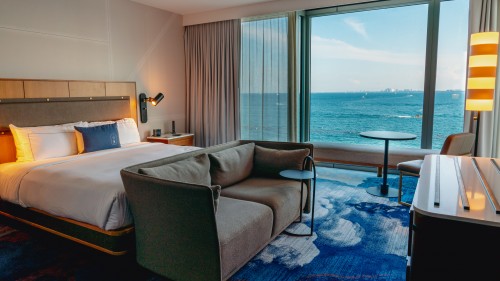In the 1880s, several wealthy Chicagoans were asked to literally move their homes to make way for the 1893 World’s Fair in today’s Jackson Park. They went south, kicking off the construction of beautiful homes and apartment buildings along South Shore Drive and in the Jackson Park Highlands. Subsequent waves of development soon brought many more people to the area, and despite considerable population loss since the 1950s, South Shore remains one of the most densely populated South Side neighborhoods. Architecturally, some of the older grand homes and buildings took cues from the luxurious South Shore Country Club. That institution’s policy of racial discrimination resulted in its closure, but community activists rallied to preserve it as a neighborhood anchor for all. Since 1975, it’s been owned by the Chicago Park District and is now named the South Shore Cultural Center. The community is currently at a crossroads, with plans for major developments to the north and south promising significant change in the coming decades.
Chatham, just to the south and east, developed in earnest in the 1880s as Irish, Italian and Hungarian railroad and steel workers flooded into new housing subdivisions on formerly swampy open land. For most of its history, Chatham has been a middle class stronghold, first for European Americans and then primarily African Americans from the 1950s to the present. Although the neighborhood has several distinct areas, it is the classic Chicago bungalow that has come to define its character by and large. A cruise through Chatham today will yield block after block of tidy brick bungalows and avenues lined with independent Black-owned businesses.

















































































































































































































